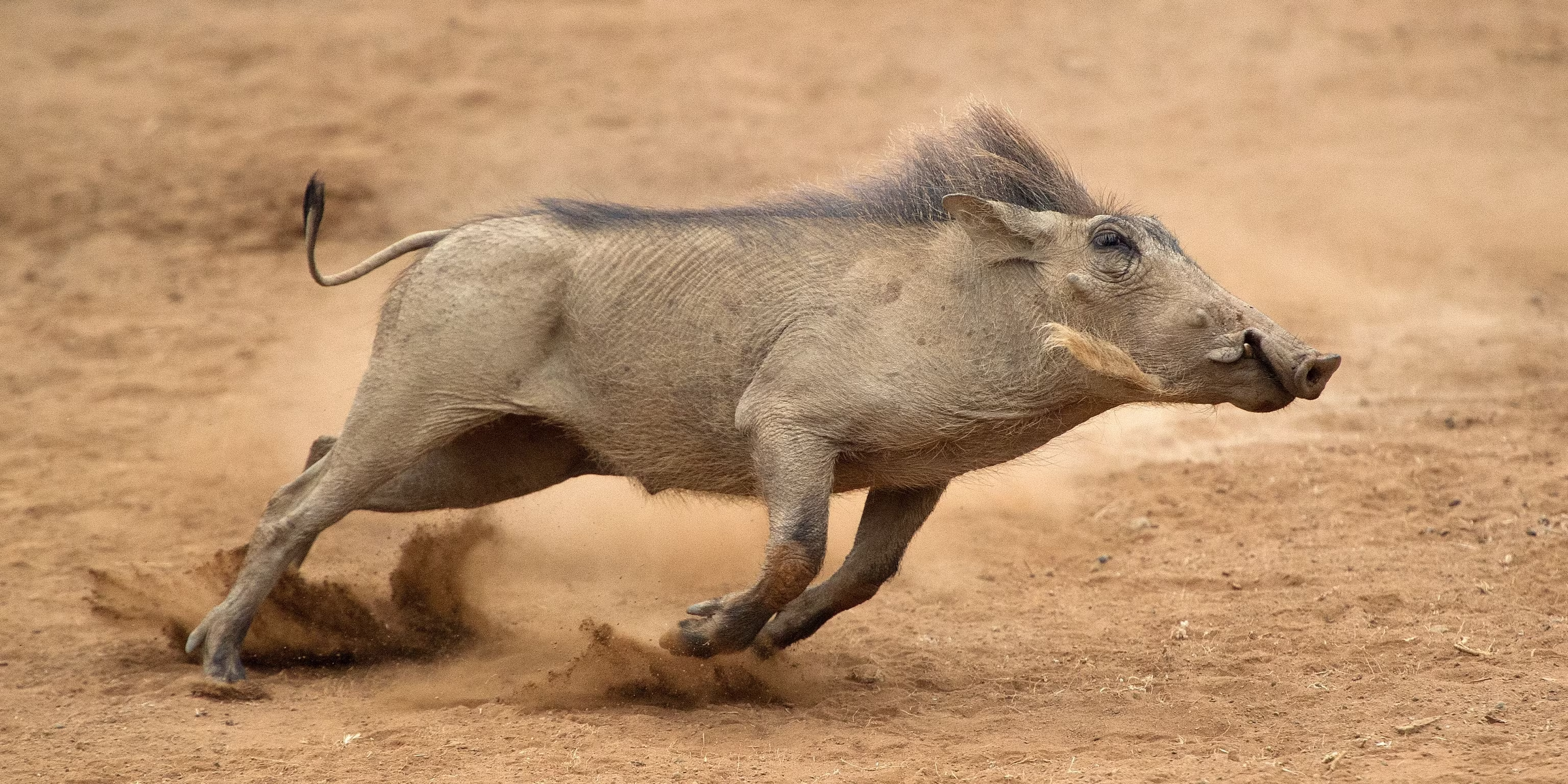
The warthog, with its distinctive appearance and unique characteristics, is a fascinating creature that roams the grasslands of sub-Saharan Africa. These wild members of the pig family are known for their unmistakable facial features, including large tusks and warty protrusions on their faces, which give them their name. Despite their somewhat intimidating appearance, warthogs are actually docile herbivores, feeding on roots, grasses, and fruits.
In this article, we will delve into 16 interesting facts about warthogs, shedding light on their habitat, behavior, and adaptations that have allowed them to thrive in their environment. From their impressive running speed to their unique grooming habits, we will explore the many facets that make warthogs a truly remarkable animal species.
Key Takeaways:
- Warthogs are fascinating animals with large tusks, distinctive facial features, and a knack for digging burrows. They are fast runners, social creatures, and play a vital role in maintaining the balance of vegetation in their habitats.
- Warthogs are skilled diggers, fast runners, and have a unique way of protecting themselves. They communicate through various sounds, have a keen sense of smell, and form symbiotic relationships with birds. They are expert escape artists and play an important role in the ecosystem.
Warthogs have distinctive facial features.
Warthogs are recognized by their large tusks, which can reach up to 25 centimeters in length. These tusks are actually elongated canine teeth. In addition, they have wart-like bumps on their faces that give them their name.
They are found in sub-Saharan Africa.
Warthogs are native to the grasslands, woodlands, and savannas of sub-Saharan Africa. They have a wide distribution, ranging from the southern parts of Africa to the eastern regions.
Warthogs are omnivorous.
While warthogs mainly feed on grasses, they are also opportunistic eaters and will consume roots, bulbs, berries, fruits, insects, and even small animals like birds and reptiles.
They are skilled at digging burrows.
Warthogs are proficient diggers and use their strong snouts and powerful front feet to excavate burrows in the ground. These burrows provide them with shade during the day and shelter from predators.
Warthogs are fast runners.
Despite their stocky appearance, warthogs are surprisingly agile runners. They can reach speeds of up to 34 miles per hour (55 kilometers per hour) when they need to escape from predators.
They are social animals.
Warthogs are known to live in small family groups called sounders. These groups typically consist of a dominant male, several females, and their offspring.
Warthogs have a unique way of protecting themselves.
When threatened, warthogs will often seek refuge in their burrows, with the females and young ones entering first. The males then use their tusks to guard the entrance and fend off attackers.
They have a keen sense of smell.
Warthogs have an excellent sense of smell, which helps them locate food and detect predators from a distance.
Warthogs communicate through a variety of sounds.
These animals use a range of vocalizations, including grunts, snorts, and squeals, to communicate with one another. Each sound has a specific meaning and helps to maintain group cohesion.
Warthogs are excellent wallowers.
Wallowing is a behavior where warthogs roll around in mud or water to cool down and protect their skin from parasites. This behavior also helps to keep them hydrated.
They have a gestation period of about 5 to 6 months.
Female warthogs carry their young for around 5 to 6 months before giving birth. A typical litter consists of 2 to 4 piglets, although larger litters have been observed.
Warthogs have an average lifespan of 15 years in the wild.
While warthogs face various threats in the wild, including predation and habitat loss, they can live up to 15 years in their natural habitat if they manage to avoid these hazards.
They have a symbiotic relationship with oxpeckers.
Oxpeckers, which are birds, often perch on the backs of warthogs and feed on ticks, lice, and other parasites that infest their skin. This mutually beneficial relationship helps both species.
Warthogs have an impressive set of defenses.
In addition to their tusks, warthogs have thick, tough skin on their bodies, which provides protection against bites and scratches from predators such as lions and hyenas.
They are expert escape artists.
Warthogs are known for their ability to quickly maneuver through dense vegetation and escape from predators. Their small size and agility make them difficult to catch.
Warthogs play an important role in the ecosystem.
As grazers, warthogs help to maintain the balance of vegetation in their habitats. Their feeding habits promote new growth and contribute to the overall health of the ecosystem.
These are just a few of the many fascinating facts about warthogs. Their unique features, behaviors, and ecological importance make them a truly remarkable species in the animal kingdom.
Conclusion
In conclusion, warthogs are fascinating creatures that inhabit the savannas of Africa. With their unique physical features and interesting behaviors, they have adapted to survive in their challenging environment. These remarkable animals have a prominent place in the ecosystem and play a crucial role in maintaining the balance of nature. From their burrowing habits to their powerful tusks and remarkable intelligence, warthogs continue to captivate both researchers and wildlife enthusiasts alike. By understanding more about these creatures, we can appreciate the incredible diversity of the animal kingdom and foster a greater sense of conservation for these incredible animals.
FAQs
Q: What do warthogs eat?
A: Warthogs are omnivores and their diet primarily consists of grass, roots, tubers, and bark. They also consume insects and small vertebrates.
Q: How fast can warthogs run?
A: Warthogs can run at speeds of up to 34 miles per hour (55 kilometers per hour) in short bursts to evade predators.
Q: Do warthogs have any predators?
A: Yes, warthogs have predators such as lions, leopards, cheetahs, hyenas, and crocodiles. They are also vulnerable to large birds of prey.
Q: Are warthogs aggressive?
A: Warthogs generally prefer to avoid conflict, but if cornered or threatened, they can become aggressive and use their sharp tusks for defense.
Q: How long do warthogs live?
A: In the wild, warthogs have an average lifespan of 7 to 10 years. However, in captivity, they can live up to 15 years or even longer.
Q: Do male warthogs fight for dominance?
A: Yes, male warthogs engage in fights to establish dominance and mating rights. These fights involve charging, slamming into each other, and clashing their tusks.
Warthogs' remarkable adaptations make them true survivors in African savannas. For more wild adventures, explore Pumbaa's antics in The Lion Guard or take flight with our guide to the best flight sticks for virtual aviation enthusiasts.
Was this page helpful?
Our commitment to delivering trustworthy and engaging content is at the heart of what we do. Each fact on our site is contributed by real users like you, bringing a wealth of diverse insights and information. To ensure the highest standards of accuracy and reliability, our dedicated editors meticulously review each submission. This process guarantees that the facts we share are not only fascinating but also credible. Trust in our commitment to quality and authenticity as you explore and learn with us.


